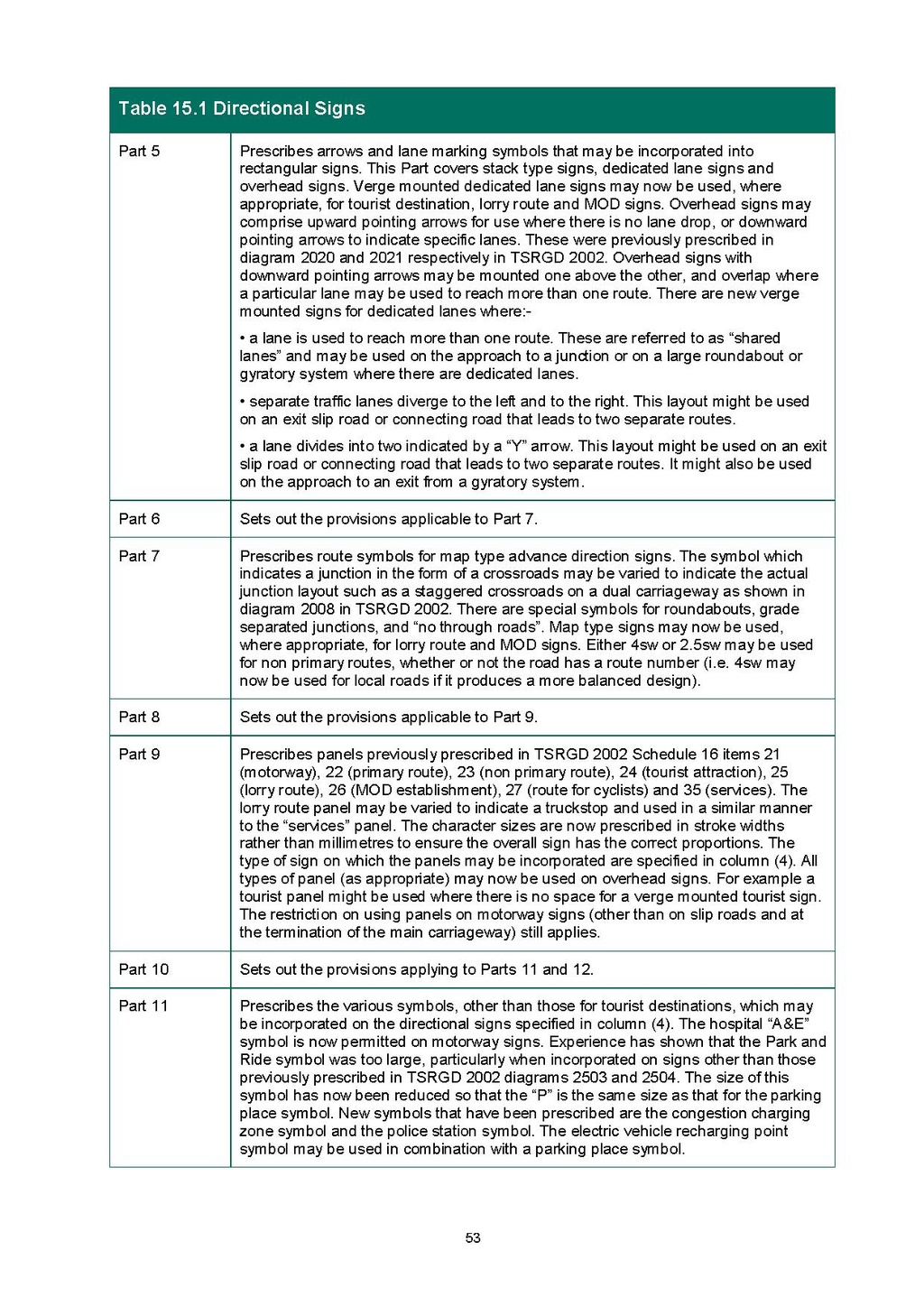| Part 5 | Prescribes arrows and lane marking symbols that may be incorporated into rectangular signs. This Part covers stack type signs, dedicated lane signs and overhead signs. Verge mounted dedicated lane signs may now be used, where appropriate, for tourist destination, lorry route and MOD signs. Overhead signs may comprise upward pointing arrows for use where there is no lane drop, or downward pointing arrows to indicate specific lanes. These were previously prescribed in diagram 2020 and 2021 respectively in TSRGD 2002. Overhead signs with downward pointing arrows may be mounted one above the other, and overlap where a particular lane may be used to reach more than one route. There are new verge mounted signs for dedicated lanes where:
|
| Part 6 | Sets out the provisions applicable to Part 7. |
| Part 7 | Prescribes route symbols for map type advance direction signs. The symbol which indicates a junction in the form of a crossroads may be varied to indicate the actual junction layout such as a staggered crossroads on a dual carriageway as shown in diagram 2008 in TSRGD 2002. There are special symbols for roundabouts, grade separated junctions, and "no through roads". Map type signs may now be used, where appropriate, for lorry route and MOD signs. Either 4sw or 2.5sw may be used for non primary routes, whether or not the road has a route number (i.e. 4sw may now be used for local roads if it produces a more balanced design). |
| Part 8 | Sets out the provisions applicable to Part 9. |
| Part 9 | Prescribes panels previously prescribed in TSRGD 2002 Schedule 16 items 21 (motorway), 22 (primary route), 23 (non primary route), 24 (tourist attraction), 25 (lorry route), 26 (MOD establishment), 27 (route for cyclists) and 35 (services). The lorry route panel may be varied to indicate a truckstop and used in a similar manner to the "services" panel. The character sizes are now prescribed in stroke widths rather than millimetres to ensure the overall sign has the correct proportions. The type of sign on which the panels may be incorporated are specified in column (4). All types of panel (as appropriate) may now be used on overhead signs. For example a tourist panel might be used where there is no space for a verge mounted tourist sign. The restriction on using panels on motorway signs (other than on slip roads and at the termination of the main carriageway) still applies. |
| Part 10 | Sets out the provisions applying to Parts 11 and 12. |
| Part 11 | Prescribes the various symbols, other than those for tourist destinations, which may be incorporated on the directional signs specified in column (4). The hospital "A&E" symbol is now permitted on motorway signs. Experience has shown that the Park and Ride symbol was too large, particularly when incorporated on signs other than those previously prescribed in TSRGD 2002 diagrams 2503 and 2504. The size of this symbol has now been reduced so that the "P" is the same size as that for the parking place symbol. New symbols that have been prescribed are the congestion charging zone symbol and the police station symbol. The electric vehicle recharging point symbol may be used in combination with a parking place symbol. |
53
